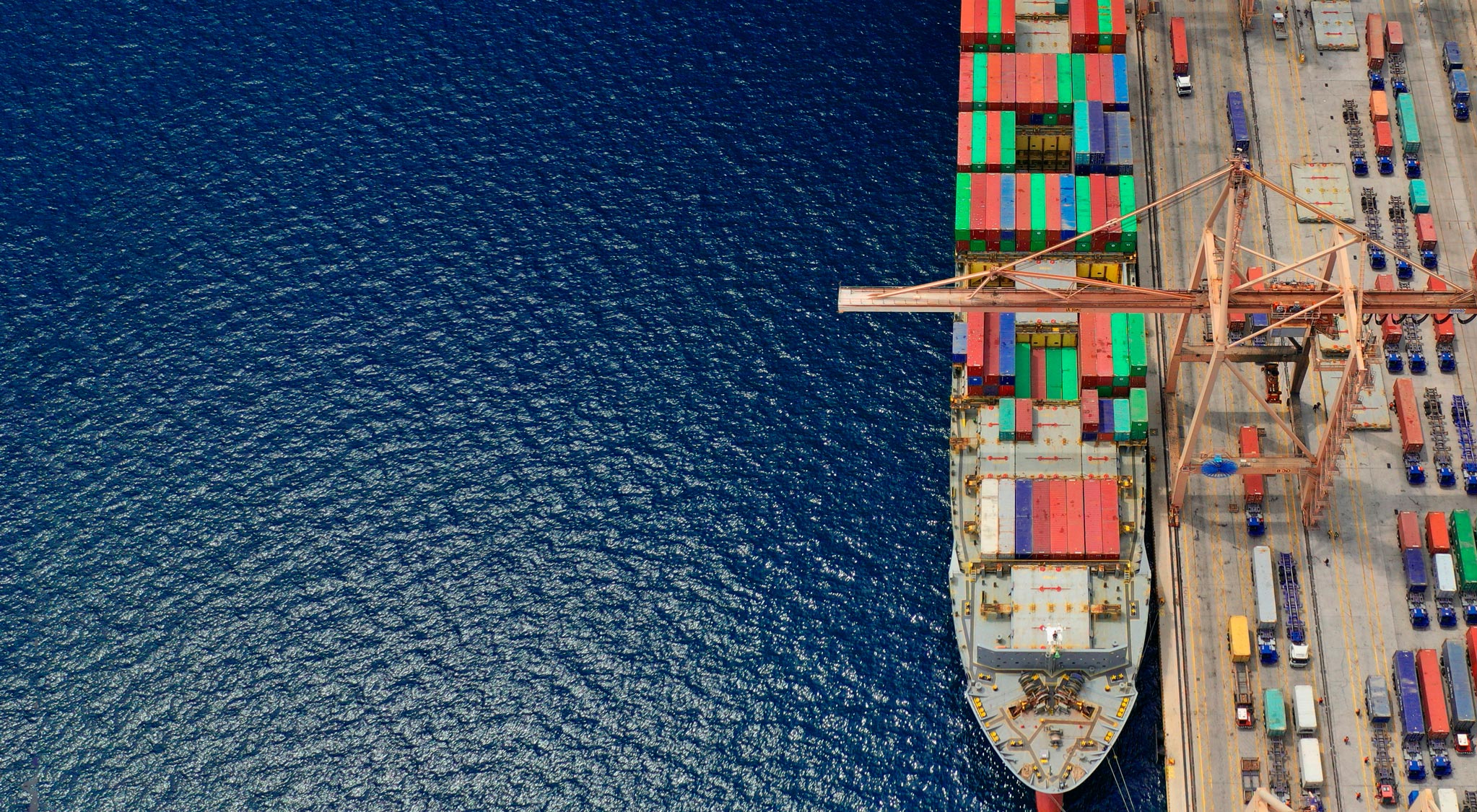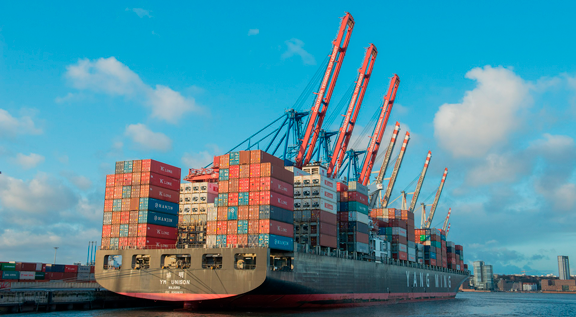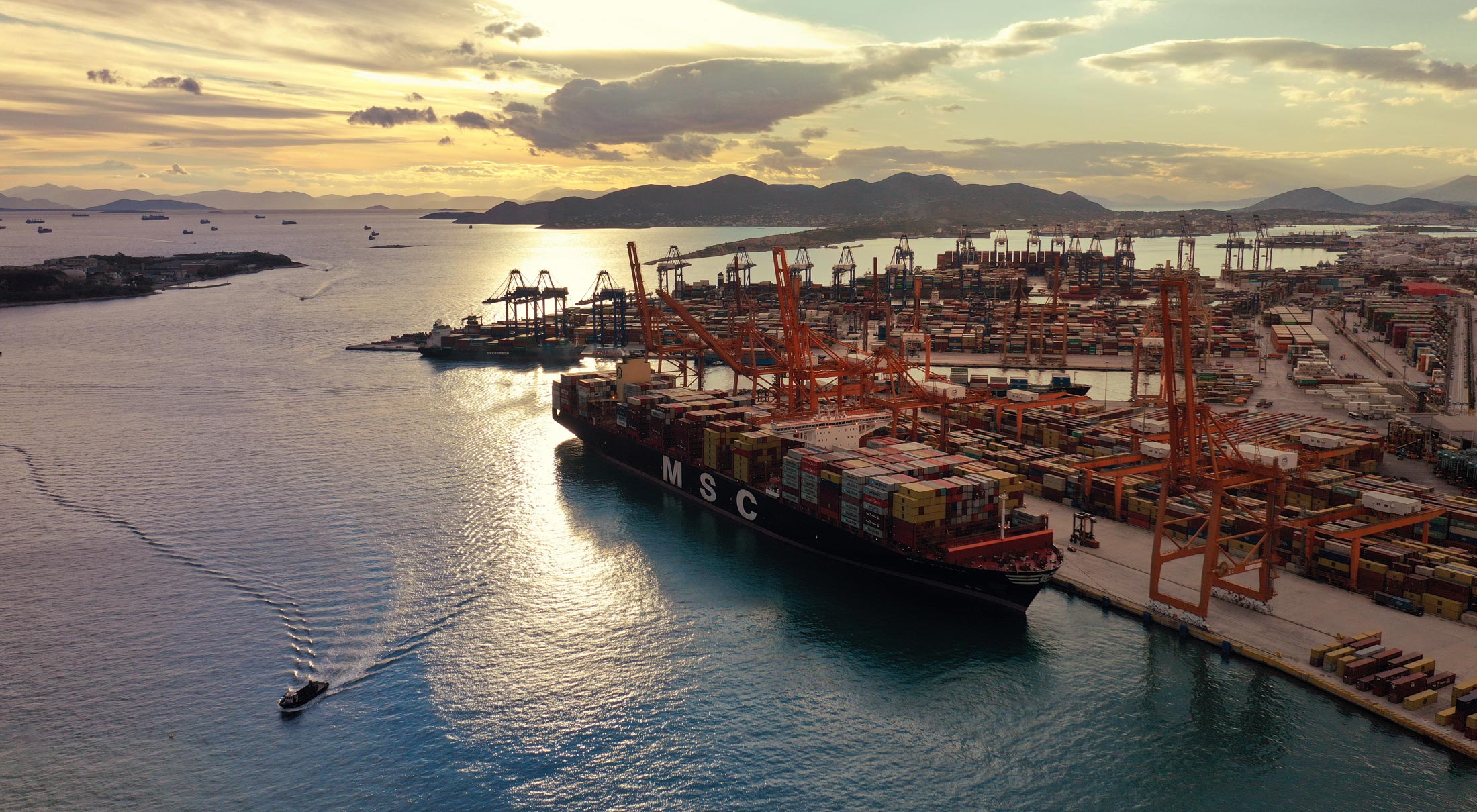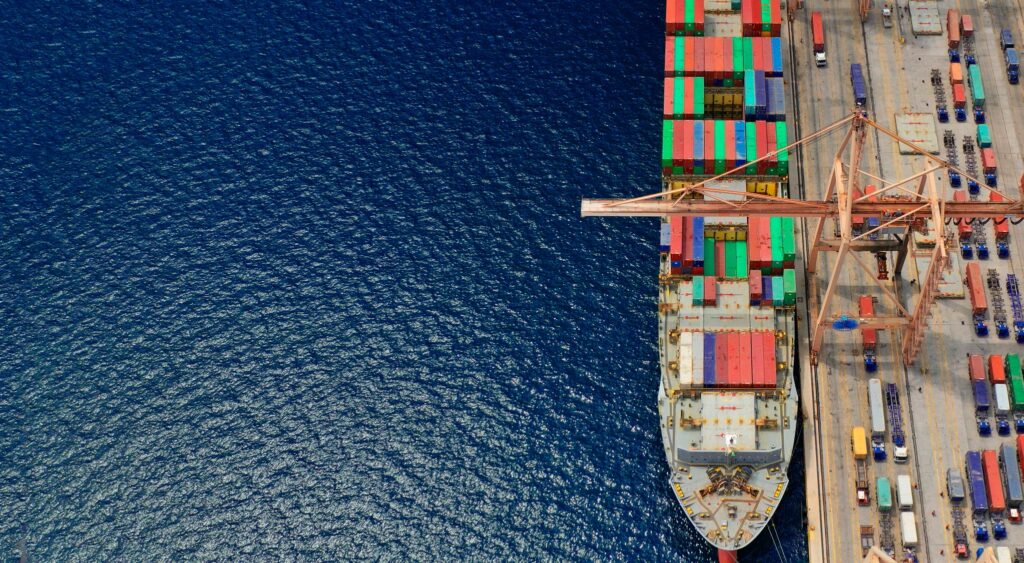
With the spread of the coronavirus, and the decree made by the World Health Organization (WHO) of a pandemic, services were shaken in several ways and, with international logistics, it was no different.
With lockdowns Globally, people tended to stay at home more and stock up on products, in addition to changing the way they consume, and in some markets even permanently. The year 2020 was atypical for the agribusiness sector, growth was uncontrolled compared to previous years, “Brazilian GDP related to agriculture closed 2020 with an expansion of 24.31% compared to 2019”, according to Technical Communication from the Confederation of Agriculture and Livestock of Brazil (CNA) and the Center for Advanced Studies in Applied Economics (Cepea).
Some schedules made in 2020 for shipments in 2021 drastically affected suppliers' results last year, as they had to absorb 100% of this increase. Several suppliers who were unable to absorb these increases, tried to renegotiate the contracts by readjusting the values, but others who were not successful, unfortunately were forced to give default in its operations.
In the road scenario it was no different, in operations involving Latin America and the national market, the increase in freight rates has been constant, in addition to the various national and international strikes that affect the arrival of products. This scenario involves both transportation from the plant to the port and from the supplier's factory to the buyer. High inflation and rising diesel prices increased freight costs more than expected. As an example, we had cases on the “Paraguay x Brazil” route where road freight was increased by more than 25% compared to the previous year, practically making this type of operation unfeasible.
It was with this in mind that the experts at Aboissa Commodity Brokers decided to do an interview with our main logistics partners, including cargo agents, port terminals and transport companies to understand a little better about the logistics crisis and what the prospects are for 2022.
THE BEGINNING OF THE CRISIS
The main factor that triggered the crisis in international logistics should come as no surprise to anyone, practically all interviewees cited the pandemic as the main culprit, which soon caused a domino effect throughout the entire production chain.
According to Renata Coelho, operational director of Columbus Logística Internacional: “With the start of the pandemic and lockdowns in several countries around the world, there was a decrease in shipments globally. As a result, shipowners stopped purchasing new containers and suspended ship manufacturing contracts. However, a few months later, with the change in consumer habits in several countries, especially in the USA, there was an unexpected increase in demand and shipowners were not prepared for it”.
 Photo: Personal archive, Renata Coelho
Photo: Personal archive, Renata Coelho– Operational director of Columbus Logística Internacional
It is important to highlight that in the first quarter of 2020 there were some factors that began to impact the logistics scenario such as: several closed ports, the reduction in work due to the absence of employees infected with covid-19, not to mention ships stopped for more than 2 weeks in quarantine so that could dock. As a consequence, the market began to face longer routes, going against the sudden increase in demand, which did not take long for there to be an imbalance in the logistics chain in general.
AFFECTED ROUTES
All maritime routes were impacted by this crisis, some before, others after. The first impacts were delays and lack of space on ships, followed by a lack of containers, and it didn't take long for this to be reflected in prices. At the end of 2020, shipowners began to update their offers, but it was in 2021 that this increase hit the market hard. To get an idea of this impact, some of our most frequent routes had surprising increases, such as in the case of Santos x Tunis where the increase in freight was more than 70%, on the India x Santos route the increase reached 150% and, in exports from Brazil to Latin America, especially to Peru, Colombia and Ecuador, the scenario worsened in 2021 where the backlog (accumulation of cargo) with shipowners only increased. Ships operated on average above 160% of their capacities and shipowners frequently reviewed the GRI (General Rate Increase). Each month there was an increase of USD 500 to USD 1,000 in freight to the Americas in order to try to bridge the gap between the high volume of cargo demanded and the reduction in ship and container offers. These excessive increases made it difficult to balance the price of commodities, which, after a period of increase, seemed to seek a decrease, but without success, as freight rates rose more than the correction in the price of products.

All routes were affected in this global logistics crisis, but according to Ian Petersen, General Manager at Bulkhaul Brazil, two stood out: the North American and Asian routes, with China being the main route, which ultimately generated the global imbalance. According to Ian, in addition to these factors mentioned, there is the impact that the pandemic had on port services, which are equally important for the production chain. He argues that “it is not just the lack of ships or containers, but the “stay at home” port terminals, forklift drivers, truck drivers (the back-end infrastructure had a decline in available labor) not keeping up with the increase in demand for these services as important as ships and containers”.
“NIt's not just the lack of ships or containers, but the 'stay at home port terminals, forklift and truck drivers. A back-end infrastructure had a decline in available labor, not taking into account the increase in demand for these services, which are as important as ships and containers”, argues Ian.
The Customer Sales Executive at Inter-Tank Logistics Group, Matias Olmedo Moscoso, said that the critical countries are: Chile, Peru, Colombia, Brazil and Argentina. Next come Ecuador, Paraguay and Central America with a lower incidence of problems in rates and viability of spaces.

Photo: Personal archive, Matias Olmedo
– Customer Sales Executive at Inter-Tank Logistic Group
When applying the current scenario to the road environment, there may be some divergences when compared to other modes. As André from the company Rufatto Transportes points out, the road market was not as prepared for the effects of the pandemic. Initially, road freight was not as affected as sea freight; on the contrary, many producers' first plan of action was to migrate to trucks. As a result, demand increased, with only an increase in shipping prices due to excess orders. However, now the bill is arriving due to shortages of inputs, extended supply deadlines, high inflation, among other factors. Following this logic, Rufatto Transportes also emphasizes that freight must follow the increase in inputs, machinery, parts and the like. This circle does not stop there, as with the increase in freight rates, the tendency is for the final product to increase, passing on the costs of the operation throughout the distribution chain until reaching the final consumer.

Photo: Personal archive, André Fufatto
– Director of Rufatto Transportes e Logísticas
THE SHIPOWNER'S REACTION
Shipowners really weren't expecting this turnaround in the market, as noted by Marcelo Schaeffer, Business Director at Manuport Liquids do Brasil.
“I think few people had any idea what was coming, otherwise they would have prepared better. The world expected a generalized slowdown, but what we have seen is an increase in the consumption of material goods due to budget surpluses due to a reduction in service consumption.”, says Marcelo.
On the other hand, shipowners are taking advantage of this moment in the market to correct offers, capitalize and update their fleets, remembering that for some time now there has been this movement among maritime giants to join together, leaving the market with less and less competition, as mentioned Jean Albuquerque, Latin America General Manager at Den Hartogh Logistics: “It was something announced, they removed services in 2020, placed ships and containers for scrap (disposal), consolidated routes with other shipowners and as it is an oligopoly, demand is restricted and freight rates increased due to lack of competition”.

Photo: Personal archive, Marcelo Schaeffer
– Business Director at Manuport Liquids do Brasil
Given the turbulent scenario that international logistics is going through, new policies and actions are becoming part of the routine at ports, to prevent the lack of containers from worsening the situation even further. In this sense, Renata told us that it is possible to observe, for example, that the time of free time of containers at the final port is increasingly short. Furthermore, shipowners are adopting the policy of stop booking, which in practice means not accepting new reservation requests until the regularization of cargo that is stopped at ports awaiting shipment; We at Aboissa observed this movement a lot in our shipments, especially in the second half of 2021, where we were waiting for confirmation of space from shipowners for weeks and our logistics partners informed us that, even though the exporter was paying high freight prices, there was no guarantee of boarding, which resulted in many delays. In addition, empty containers are being repositioned to busier ports.
{module Form RD}
FIGHT THE LOGISTICS CRISIS
According to Marcelo, the importance of immediate action to combat the crisis involves relocating resources, such as ships and containers, to more sought-after destinations, however, the same warns that such relocation may result in new routes lacking resources. Finally, it is also pointed out that the increase in the fleet is something that is happening, but it could take years to stabilize in this way.
Felipe Vasconcellos, CEO of Isis Transportes e Terminais, mentions that many companies were unable to sustain themselves during the crisis, costs in this segment increased a lot, in addition there was a lack of road transport, and the transit time of ships became longer. The impact of this crisis goes beyond the logistics industry, in agribusiness, Felipe comments on several cases of delayed land transport, crowded ships on the high seas, goods losing their shelf life, gave the example of exporters of sugar in bags, where the merchandise is worth approximately USD 20,000.00, when it undergoes a freight adjustment of USD 5,000.00, it makes the operation completely unfeasible, the exporters are unable to transfer the product, they stop exporting and consequently generates even more unemployment.

Photo: Personal archive, Felipe Vasconcellos
– CEO of Isis Transportes e Terminais
But it is in these moments of crisis that great opportunities arise, which is why companies that have managed to reinvent themselves are finding creative ways to solve their customers' problems and remain in the market, as is the case with the Isis terminal, which has continued to invest even though in this pessimistic scenario, they are acquiring new machines and expanding the terminal area.
DIFFICULTIES AND SHORT-TERM PROSPECTS
Within this current market scenario, there are still many uncertainties related to freight prices. This is what Ian says: “I believe that we will still have fluctuations in freight rates during 2022 and they should be cyclical regarding Brazil as we already have annually”.
There are also those who bring a more optimistic perspective to the freight scenario in 2022, according to Marcelo, “the indicators point to stabilization at current levels for some time. Reduction only for the second half of 2022″, in line with what Renata pointed out: “We believe that we are close to reaching the ceiling, where prices will stabilize at this new freight level”.
In relation to the pandemic, with the advancement of vaccination, will we see an improvement in this scenario? According to Ian, companies will eventually have to overcome this phase with vaccinated teams, learning to become more efficient in the composition of loads, returning the necessary balance to the market. But we also need to pay attention to the resurgence of cases around the world, which could cause impacts again.“The problem is that now Covid cases are resurfacing, which is why ports operate with fewer staff and less capacity to receive ships and containers'”, highlighted Jean from Den Hartogh.
“The problem is that now Covid cases are resurfacing, which is why ports operate with fewer staff and less capacity to receive ships and containers.“ highlighted Jean from Den Hartogh.

Photo: Personal archive, Jean Albuquerque
– Director of Den Hartogh
Within agribusiness, the logistical situation continues to be worrying, as there is still a large global demand for Brazilian products, and the same logistical problems persist. Considering these points, “there is an upward trend in commodities'', says Renata. ''Agrochemicals are imported, as is machinery'', highlighted Jean, reinforcing the impacts that are also caused on the cost of production.
Ultimately, the tendency is for the logistics scenario to undergo a rearrangement, with the entry and exit of some players. ''The shipping price will make some previously impossible businesses viable, while others will no longer make sense'', concludes Marcelo.
ADAPTATION TO THE NEW SCENARIO
Considering the current scenario, several partners were affected and have already created action plans. In general, the strategy would be advance planning to guarantee the flow of shipments. Renata also emphasizes that it is vitally important to choose reliable logistics partners at this time, who work closely and complement the operation.
Other partners understand that this is an important time to reduce profits in order to maintain their operations. Ian says that at times it is necessary to endure these bottlenecks with reduced profits to maintain balance, as costs have increased exponentially for everyone involved.
In some cases, we even see a modal change, as already mentioned by our partners Marcelo and Jean, from sea to road; change of packaging, etc.
It is also important that shipment schedules are adhered to to ensure solidity for future negotiations with shipowners.
“Plan and schedule your operations and be close to your partners. It is also worth complying with the reservations submitted to shipowners, as stability and constancy are highly regarded.”, highlights Renata.
Still in the sense of planning, readaptation to the current scenario and relationships with partners, Marcelo highlights other important factors for the current challenges, which would be “reevaluate your logistics chain, supplier base and customers. This must be done considering that the old viability rules are no longer valid and that any idea must be considered.”.
Cost optimization continues to be a contingency action plan also in the road sector, accompanied by advance programming to minimize extra external costs.
WHAT CAN WE EXPECT
According to most of our interviewees and market information, a quick recovery in international logistics is not expected. The bets are only for after the second half of 2022, but there is no common vision between the different market players. What we observe is a consensus that freight prices tend to stabilize. All this chaos generated should not be resolved in the short term, as it depends on time-consuming initiatives such as expanding ports, manufacturing larger ships and investing in infrastructure. Another point is that for the logistics sector, the Brazilian market represents only 1% of global container movement, so we are no longer the preferred route for shipowners, who in turn prefer the northern hemisphere, which is more profitable.

The market is increasingly interdependent and sensitive to changes, we were able to observe this relationship with strikes, lockdowns and climatic factors in certain regions that had global impacts, for example, the blockage of the Suez Canal that made the logistics crisis that we were already facing more serious. A positive point at this time is mass vaccination, which has been essential to contain restrictions and the lack of labor at ports and terminals, relieving logistical pressure.
In short, all the uncertainties experienced in the last two years have led companies in the international sector to look for new alternatives to renew themselves and adapt to the adversities caused by international logistics: such as opening markets that were previously little explored, replacing products and searching for new suppliers. and/or commercial partners and alternative routes. Citing some examples, our customers sought new suppliers in different countries, and this phenomenon could also be seen in other areas, such as replacing transport modes (such as rail, road and even replacing shipments in bulk containers) to avoid inflated freight rates. on some routes. In the face of these turbulences and in a scenario of so much uncertainty, the strategies recommended to importers and exporters are to plan stocks and advance their sales to guarantee shipment, in addition, to seek alternatives such as opening new markets on routes less affected by the shortage of containers. in order to expand business possibilities.
Per: Aboissa Commodity Brokers | Essay: Aboissa Soft Oils Team | Revision: Aboissa Oleochemical Products Team
Contribution and Thanks: Renata Coelho – Operational Director of Columbus Logística Internacional, Matias Olmed – Customer Sales Executive of Inter-Tank Logistic Group, Jean Albuquerque – Director of Den Hartogh, Bulkhaul Brasil, Felipe Vasconcellos – CEO of Isis Transportes e Terminais, André Rufatto – Director of Rufatto Transport and Logistics and Marcelo Schaeffer – Business Director at Manuport Liquids do Brasil


 Photo: Personal archive, Renata Coelho
Photo: Personal archive, Renata Coelho






















